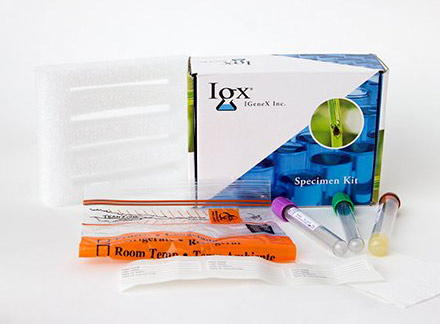L yme disease is one of the most widespread illnesses in the U.S. today, yet the CDC continues to recommend an inadequate diagnostic test that was designed in the 1980s.
Since the first Lyme case was diagnosed in 1977, there’s been a crying need for an accurate Lyme disease test. Even after all these years, the current “standard” test for Lyme disease, frankly, stinks.
 Today, better tests are finally available.
Today, better tests are finally available.
As the CDC has not promoted any improvements in testing since the Dearborn conference in 1994, [1] many private laboratories have taken on the burden of research and development themselves.
One such private lab, IGeneX, has developed two new immunoblot tests capable of detecting multiple species of borrelia (see below). The “Lyme ImmunoBlot” test is approved for use in all states including New York. The tick-borne relapsing fever or “TBRF ImmunoBlot” is currently undergoing validation review by New York state’s department of health and thus is available to all U.S. residents outside of New York.
What IGeneX ImmunoBlots Can Detect
| Lyme ImmunoBlot | TBRF ImmunoBlot |
| B. burgdorferi B31 | B. coriaceae |
| B. burgdorferi 297 | B. hermsii |
| B. afzelii | B. miyamotoi |
| B. Californiensis | B. parkerii |
| B. garinii | B. turcica |
| B. mayonii | B. turcatae |
| B. spielmanii | B. texasensis |
| B. valaisiana |
What is the CDC-Recommended Lyme Disease Test?
The current Lyme disease test was originally designed for surveillance (to track the spread) of a single species of bacteria—later named Borrelia burgdorferi B31—that was first detected in and around Lyme, Connecticut. That test was never intended to diagnose borreliosis (infection caused by borreliae) in other parts of the U.S. or on other continents.
Today, we know there are more than 300 strains of borrelia worldwide.
They are divided into two broad categories: Borrelia burgdorferi sensu lato (which causes Lyme disease), and Tick-borne Relapsing Fever Borrelia (or TBRF, which causes Lyme-like illness). Let’s call these types A and B. The current Lyme test detects only a fraction of type-A cases, and anyone with type B will receive a negative result.
As Dr. Jyotsna Shah, CEO of IGeneX explains, “With the increase of international travel, people may get infected at home, other parts of the U.S., or Europe. Thus, it is important to have a Lyme disease test that can detect the infection no matter where it was acquired…….Join or login below to continue reading.




























